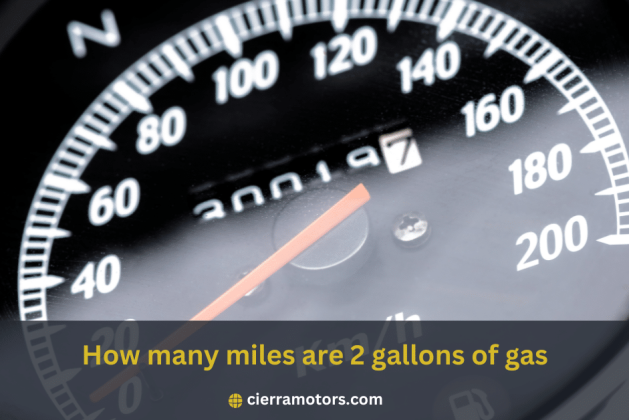For car enthusiasts, the quest for optimal vehicle performance extends far beyond the purr of a powerful engine and the sleek lines of an aerodynamic chassis. One metric that resonates deeply with those who see their cars as more than mere transportation is gas mileage. Just how far can two gallons of gas take you? And, more importantly, how can you stretch those gallons to cover a distance that gives you the most bang for your fuel buck?
In this exhaustive guide, we’ll explore the intricate world of fuel efficiency, equipping you with the knowledge to maximize your car’s performance, minimize costs, and reduce your environmental footprint.
Gas Mileage Basics
Understanding gas mileage—often called fuel economy—is a fundamental principle for any driver. This critical metric is a ratio calculated by determining how many miles you can travel with a single gallon of gas. The formula is elegantly simple:
Gas Mileage (mpg) = Miles Driven / Gallons Used
This equation underpins your car’s economic prowess. Knowing your vehicle’s fuel efficiency empowers you to plan longer journeys without fretting about fuel stops, helps you gauge the impact of driving conditions on your fuel consumption, and can highlight issues that might hamper your car’s performance.
Calculating Distance with 2 Gallons
When armed with the knowledge of your car’s gas mileage, you can easily calculate the distance you can travel on two gallons of gas. Again, the formula is elementary:
Distance = Gas Mileage (mpg) * Gallons Consumed
With an average car’s fuel efficiency hovering around 25 miles per gallon, two gallons will take about 50 miles. If you’re driving a more eco-conscious model sporting 40 mpg, brace yourself for an 80-mile joyride. The magic of mathematics starts to unfold—the more miles you cover with each gallon, the less you spend at the pump, and the further you extend the life of our planet’s finite fossil fuels.
Factors Affecting Gas Mileage
Your vehicle’s fuel economy is not set in stone but a flexible figure subject to many influences. Here are the significant factors that can tilt the scales in favor of or against your gas mileage:
Driving Habits

Driving car at the high speed and sudden braking will consume more gas
Aggressive acceleration, speeding, and sudden braking contribute to increased fuel consumption. It’s not just about safety and legal considerations—reprogramming habits can translate to significant savings at the pump.
For instance, flooring the gas pedal to accelerate rapidly can drive up your fuel consumption by 40% or more. Ease into acceleration instead, aiming for a slow and steady speed increase. If you’re driving on the highway, avoid speeding; keeping your velocity under 60 miles per hour can save you up to 23% of fuel costs.
Vehicle Maintenance
Maintaining optimal tire pressure, efficient engine performance, and clean air filters are all crucial for maximizing fuel economy. Engaging in simple routine maintenance tasks, such as regularly checking tire pressure and changing the oil at recommended intervals, can significantly enhance your vehicle’s mileage, leading to cost savings and improved environmental impact.
Environmental Factors
Various factors affect fuel efficiency, such as temperature, vehicle weight, and traffic conditions. Lower temperatures can thicken the oil, forcing the engine to exert more effort and use more fuel.
Additionally, the weight of the vehicle places added strain on the engine, while stop-and-go traffic patterns contribute to inefficient fuel consumption. To enhance fuel efficiency, it is beneficial to minimize idling time, as this simple action can have a notable impact on the vehicle’s overall fuel consumption.
Engine Consumption
The design and condition of your engine play a crucial role in determining your gas mileage. Modern engines, hybrids, and electric vehicles are engineered with advanced technologies that enhance fuel efficiency by optimizing combustion, reducing energy loss, and utilizing alternative power sources.
In contrast, older and conventional engines may have outdated designs, resulting in less efficient fuel consumption. Upgrading to newer engine models or alternative power sources can significantly save fuel costs and reduce environmental impact.
Tips for Improving Gas Mileage
Optimizing your gas mileage can be as simple as adjusting your driving style or being diligent with maintenance. Here are some strategies to consider:
Efficient Driving Techniques
- Accelerate gently because aggressive driving can increase fuel consumption by up to 40%.
- Observe speed limits since exceeding them results in increased wind resistance and burns more fuel
- Use cruise control for extended highway journeys as it helps maintain a constant speed, reducing fluctuations that negatively affect gas mileage.
- Keeping your tires properly inflated will help you get the most out of each gallon of gas and extend tire life.
- Anticipate traffic flows to avoid unnecessary braking because it wastes fuel and wears out brake pads.
- Coasting can conserve fuel by shifting to neutral (in a manual transmission car) or letting off the gas, particularly when going downhill or approaching a stop.
Regular Maintenance Practices
- Keep your engine properly tuned
- Maintain a consistent alignment
- Ensure your air filters are clean
- Check your tire pressure regularly
- Use the recommended grade of motor oil
Conclusion
Your car’s gas mileage is not a static attribute but a dynamic reflection of your driving and maintenance ethos. By keeping tabs on the distance two gallons can yield in your vehicle, you’re optimizing your personal bottom line and contributing to a cleaner, more efficient planet. We encourage all car enthusiasts to turn a more analytical eye to their vehicles for the bounty of savings and sustainability that discovery affords.
FAQs
How many miles does 1 gallon of gas get you?
A gallon of gas can carry you approximately 25 to 30 miles. But this range can vary depending on the factors mentioned earlier.
Is it wrong to drive on low fuel?
Continually driving with low fuel levels can lead to fuel pump issues over time, as the pump relies on the gasoline in the tank to act as a coolant and lubricant. This practice can also cause sediment and debris at the bottom of the tank to be sucked into the pump, potentially leading to clogs and damage.
Is it better to leave the gas tank full or empty?
Leaving your tank close to full can reduce the amount of air in the tank and limit evaporation, which is better for the environment. However, for the safety and longevity of your fuel pump, it is not advisable to run the tank empty, either. Striking a balance is essential.
Real-World Case Studies
Case Study 1: Comparing Two Cars’ Mileage
A 25 mpg-rated car compared to a 30 mpg-rated car over a 50-mile drive using 2 gallons of gas showcases the significant difference, covering 50 and 60 miles, respectively. The discrepancy highlights the substantial long-term savings potential of purchasing a more fuel-efficient model.
Real-life Driver Example: Impact of Driving Habits
In a driving behavior experiment, switching between aggressive and eco-friendly driving yielded a 15% disparity in gas mileage. This case study accentuates the monumental effect driving styles can wield over fuel consumption.
Urban vs. Highway Driving: The Environmental Factor
City driving versus highway miles on the same car model displayed a 20% difference in gas mileage. This example stresses the varying environmental conditions that require adaptable moving approaches to optimize fuel usage.
Vehicle Maintenance Case: Before and After
After neglecting maintenance for a year, gas mileage dipped by 10%. Once a thorough tune-up and pressure check was performed, this case saw a resurgence in the car’s economy to surpass original expectations, highlighting maintenance’s crucial role.
Long-Term Tracking: Impact of Consistent Maintenance and Driving Habits
A meticulous tracking of gas mileage and driving habits demonstrated a notable 25% acceleration in fuel economy over six months. This longitudinal study underscores the cumulative effect of minor adjustments on a vehicle’s overall performance.



Leave a comment